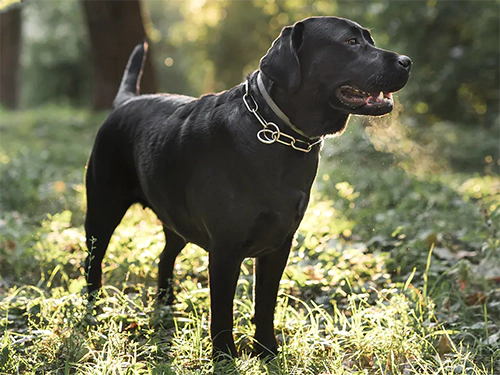Dominant black coat

Definition
Genetic basis
Other relevant information
Bibliography
Candille SI, Kaelin CB, Cattanach BM,et al. A -defensin mutation causes black coat color in domestic dogs. Science. 2007 Nov 30;318(5855):1418-23."
Kerns JA, Cargill EJ, Clark LA,et al. Linkage and segregation analysis of black and brindle coat color in domestic dogs. Genetics. 2007 Jul;176(3):1679-89.

